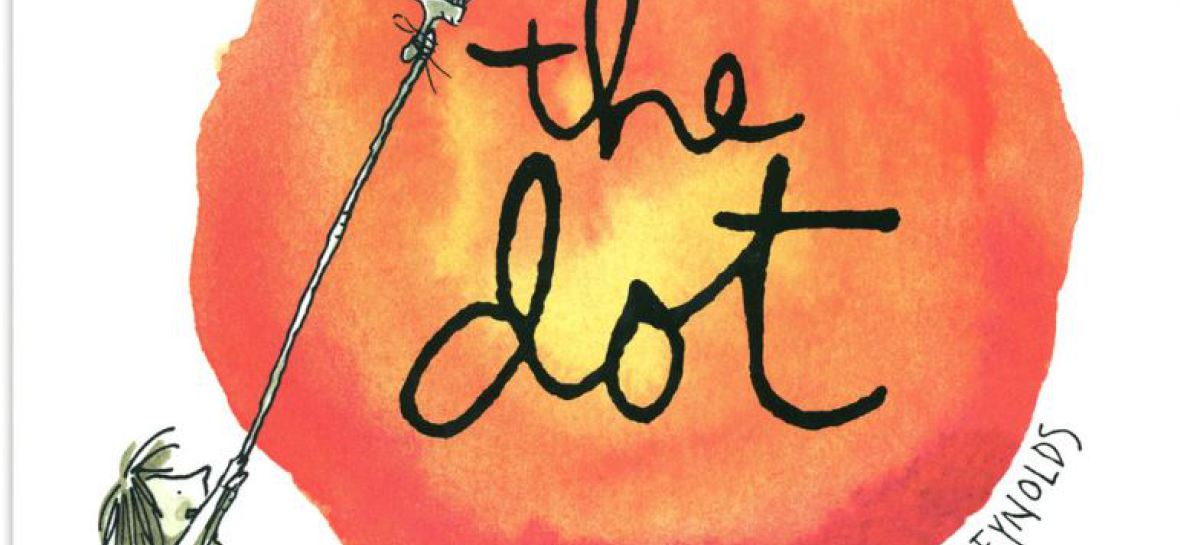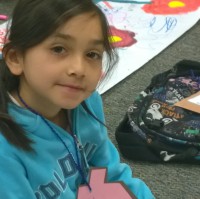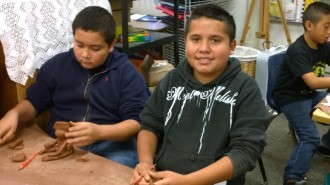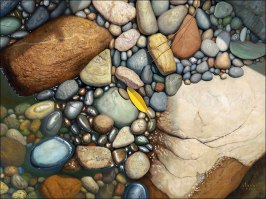

Magic Makers
C...Creating
Collaboratively engage in exploration and imaginative play with art materials.
Use observation and investigation to make a work of art.
Explore use of tools and materials to create a work of art or design.
Demonstrate safe and proper use of materials, tools and equipment while making art.
Identify and classify uses of everyday objects through drawing, diagrams, sculptures, or other visual means.
Use art vocabulary to describe choices while creating art.
Use texture in two-dimensional and three-dimensional works of art.
Mix secondary colors from primary colors and describe the process.
Demonstrate beginning skill in the manipulation and use of sculptural materials (clay, paper, and paper maché) to create form and texture in works of art.
Plan and use variations in line, shape/form, color, and texture to communicate ideas or feelings in works of art.
Create a representational sculpture based on people, animals, or buildings.
Draw or paint a still life, using secondary colors.
Create artwork based on observations of actual objects and everyday scenes.
A...Articulating
Explain why some objects or artifacts are valued over others.
Ask and answer questions who, what, where, when, why and how artwoks should be prepared for presentation or preservation.
Identify the roles of people who work in art and visit art museums and other art venues.
Develop Perceptual Skills and Visual Arts Vocabulary
- 1.1 Describe and replicate repeated patterns in nature, in the environment, and in works of art.
- 1.2 Distinguish among various media when looking at works of art (e.g., clay, paints, drawing materials).
Analyze Art Elements and Principles of Design
- 1.3 Identify the elements of art in objects in nature, in the environment, and in works of art, emphasizing line, color, shape/form, and texture.
F...Finding Connections
Understand that different people from different places and times have created art for a variety of reasons.
Identify times and places students create art outside of school.
Role and Development of the Visual Arts
- 3.1 Recognize and discuss the design of everyday objects from various time periods and cultures.
- 3.2 Identify and describe various subject matter in art (e.g., landscapes, seascapes, portraits, still life).
Diversity of the Visual Arts
- 3.3 View and then describe art from various cultures.
- 3.4 Identify art objects from various cultures (e.g., Japanese screen painting, Mexican tin art, African masks) and describe what they have in common and how they differ.
Connections and Applications
- 5.1 Clap out rhythmic patterns found in the lyrics of music and use symbols to create visual representations of the patterns.
- 5.2 Compare and contrast objects of folk art from various time periods and cultures.
Visual Literacy
- 5.3 Identify and sort pictures into categories according to the elements of art emphasized in the works (e.g., color, line, shape/form, texture).
Careers and Career-Related Skills
- 5.4 Describe objects designed by artists (e.g., furniture, appliances, cars) that are used at home and at school.
E... Evaluating the Arts
Select and describe works of art illustrate daily life experiences of oneself and others.
Compare imagesthat represent the same subject.
Interpret art by categorizing subject matter and identifying the characteristics of form.
Classify artworks based on different resons for preferences.
Derive Meaning
- 4.1 Discuss works of art created in the classroom, focusing on selected elements of art (e.g., shape/form, texture, line, color).
- 4.2 Identify and describe various reasons for making art.
Make Informed Judgments
- 4.3 Describe how and why they made a selected work of art, focusing on the media and technique.
- 4.4 Select something they like about their work of art and something they would change.
Artful Teaching
Mrs. Schellenberg & Young Artists
Ralph Waldo Emerson's Poem: Success- to leave the world a bit better, whether by a healthy child, a garden patch or a redeemed social condition; To know even one life breathed easier because of you.
Thank you AT&T
We used the wiring for our artful galimotos





